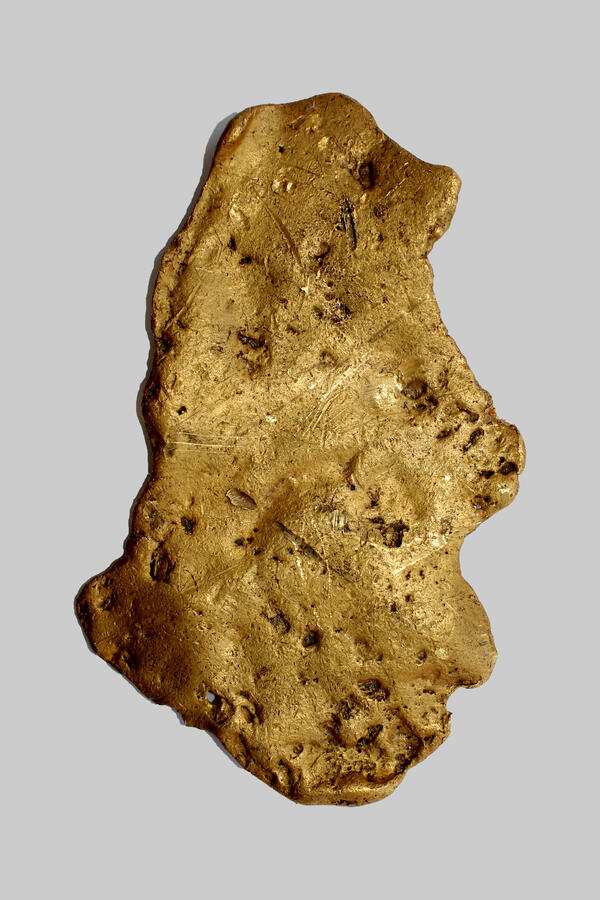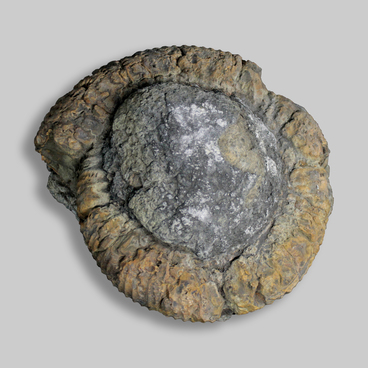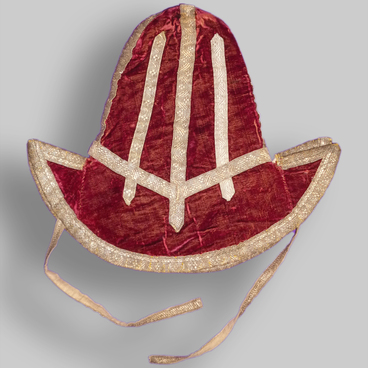The nugget ‘Irendyk Bear’ is kept in the holdings of the National Museum of the Republic of Bashkortostan.
Not far from the place where the ‘Bear’ was found, one and a half centuries before these events, the famous nugget ‘Big Triangle’ weighing 36 kilograms was found. According to historical documents, at the beginning of the 19th century about 500 kilograms of the precious metal were mined here annually.
The nugget was found by Radik Utyagulov, a machine operator in the Baymakskiy district, in a field in the spring of 1992. Stopping at the edge of the field for refueling, Radik Utyagulov saw a shiny object. The machine operator dug it up and threw it into the cab, where the nugget lay for several days. After, Utyagulov handed over the ingot to the authorities and received a percentage of the find in monetary terms. There are two versions of how the nugget could have gotten to the collective farm field. According to legend, the ‘Irendyk Bear’ was sent to the Bashkirs and Ivan the Terrible in 1557 as a sign of respect, but bandits attacked the cart train on the way. One of the archers managed to bury the nugget in the ground. It was found 435 years later.
Sagit Yusupov, an employee of the ‘Institute of Geology of the Ufa Scientific Center of the Russian Academy of Sciences’, who analyzed the nugget, had another version as to the origin of the find: ‘In 1920, at a gold mine near Kuseyevo, a nugget was found — according to descriptions — very similar to the “Irendykskiy bear”.
Sagit Yusupov, an employee of the ‘Institute of Geology of the Ufa Scientific Center of the Russian Academy of Sciences’, who analyzed the nugget, had another version as to the origin of the find: ‘In 1920, at a gold mine near Kuseyevo, a nugget was found — according to descriptions — very similar to the “Irendykskiy bear”.
The head of the mine was taking the nugget on a cart to the district administration center and went missing.
The police couldn’t even find the horses. Most likely, the same nugget ‘surfaced’ in the field. The bandits may have hidden it. Or the head of the mine managed to throw it out unnoticed during the chase. ‘I took soil samples at the place of discovery — analyzes showed that this area, even hypothetically, cannot be considered gold-bearing. Besides, such giants, as a rule, lie at a depth of 10-15 meters, and not on the surface.’ Scientists agreed that this nugget is local, mined at one of the Bashkir mines.
Not far from the place where the ‘Bear’ was found, one and a half centuries before these events, the famous nugget ‘Big Triangle’ weighing 36 kilograms was found. According to historical documents, at the beginning of the 19th century about 500 kilograms of the precious metal were mined here annually.
However, in the 1970s, the ore dried up and gold mining ceased. But, as experts believe, unexpected finds of native gold may still be found in these places.
The exposition of the National Museum of the Republic of Bashkortostan displayed a dummy nugget.
The exposition of the National Museum of the Republic of Bashkortostan displayed a dummy nugget.



